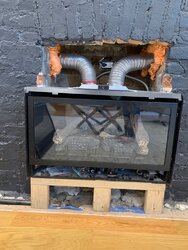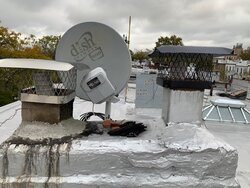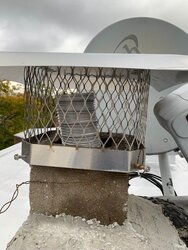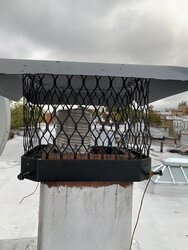Hello Forum,
We purchased an INNSBROOK direct-vent gas insert and had it installed earlier this week. It's a natural gas insert connected to 28' vertical vent run up an existing brick chimney. The chimney has terracota inserts where our intake and exhaust piping now runs. The unit fires up and within 30 seconds it goes out. Blue flame starts and then quickly dissipate above the ceramic logs and then you hear a click, which I assume is a safety valve or sensor getting thrown. Not enough 02? Bad circulation? Who knows, not me!
Inside the unit, at the top near the exhaust pipe is an adjustable flue baffle vent. I read opening up all the way can help with circulation. We though this would solve the issue of the blue flames going out after 30 seconds. After we did that, we were successful at keeping the flame going but the top of the unit got incredible hot so we turned it off after seeing some smoke. The smoke could be due to it being the first full firing(signs it was burning off all the initial manufacturers oils and sealants stated in the instructions).
The instructions also state if you have a vertical run over 20', which we have you should install the supplied air restrictor plate in the back. I plan on trying this next. So we have an adjustable flue baffle vent, an air restrictor plate, and over 20' of vertical piping, and the blower never turns on. Anyone know how we can get this gas to stay lite, not be blue flame, and not allow all the heat out of the top?
Lots of questions...apologies if I'm overstepping here.
Thanks again,
Whalien
We purchased an INNSBROOK direct-vent gas insert and had it installed earlier this week. It's a natural gas insert connected to 28' vertical vent run up an existing brick chimney. The chimney has terracota inserts where our intake and exhaust piping now runs. The unit fires up and within 30 seconds it goes out. Blue flame starts and then quickly dissipate above the ceramic logs and then you hear a click, which I assume is a safety valve or sensor getting thrown. Not enough 02? Bad circulation? Who knows, not me!
Inside the unit, at the top near the exhaust pipe is an adjustable flue baffle vent. I read opening up all the way can help with circulation. We though this would solve the issue of the blue flames going out after 30 seconds. After we did that, we were successful at keeping the flame going but the top of the unit got incredible hot so we turned it off after seeing some smoke. The smoke could be due to it being the first full firing(signs it was burning off all the initial manufacturers oils and sealants stated in the instructions).
The instructions also state if you have a vertical run over 20', which we have you should install the supplied air restrictor plate in the back. I plan on trying this next. So we have an adjustable flue baffle vent, an air restrictor plate, and over 20' of vertical piping, and the blower never turns on. Anyone know how we can get this gas to stay lite, not be blue flame, and not allow all the heat out of the top?
Lots of questions...apologies if I'm overstepping here.
Thanks again,
Whalien





